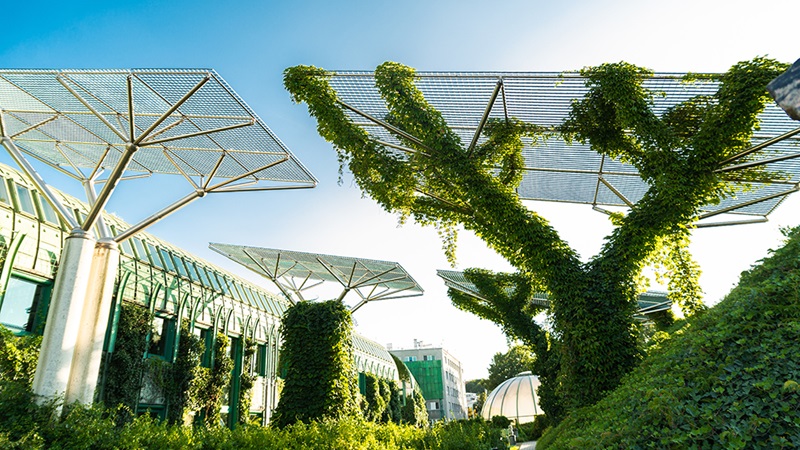
Priyanka Seevaparsaid
Building a Greener Future: Europe's Success Stories in Green Infrastructure
Most Read Stories Today
-
Water Scarcity and Artificial Rainfall: The Positive and The Negative Effects of Cloud Seeding, including Health Hazards and Climate Implications.
-
Renewable Energy in Rural Areas: Challenges, Opportunities, and Successful Rural Projects
-
Pakistan's Agriculture at Risk Due to Climate Variability
-
South Africa's Recent Floods: Is Climate Change to Blame?
-
South Korea's floods: root causes and prevention strategies.
-
South Africa: Cape Town, A City Under Fire
-
The Human Cost of Climate Disasters
-
Our Oceans, Our Future: The South African Dilemma of Overfishing
-
Degenerative Impact of Hydrocarbons On The Environment.
-
Successes and Failures of Paris Agreement
How would you feel if you moved to a city for a great job with good pay and supportive colleagues, only to develop asthma, dry eyes, and thinning hair within months due to the effects of climate change?
The lack of green spaces and rampant air pollution are just some of the issues many people face regarding their physical appearance and biological health.
Cue the concept of green infrastructure (GI). While GI isn’t new, it isn’t discussed enough, especially given the decline of natural habitats and the challenges posed by climate change. GI is a system of elements that mimic natural processes, providing communities with ecological, social, and economic benefits. It can be implemented on various scales, from small, localized projects to large regional or even global initiatives.
GI includes features such as parks, forests, green roofs, urban gardens, and green corridors. Many European countries have been at the forefront of implementing green infrastructure and other sustainable initiatives. Some success stories from cities across Europe include:
Copenhagen, Denmark
In 2011, Copenhagen experienced a catastrophic cloudburst that resulted in 135.4 mm of rainfall in just two hours. With damages amounting to $910 million, the city recognized and predicted the increasing risk of frequent downpours and rising sea levels due to climate change. The following year, Copenhagen prepared 300 cloudburst projects to mitigate future damage.
The adopted GI solutions included parks, sunken gardens, and other natural areas to manage rainwater and seepage. Additionally, stormwater and sewage management systems were improved to direct excess rainfall away from flood-risk zones. Asphalt walking paths were replaced with hilly grass coverings, transforming mundane streets into basin-like raised sidewalks. All these efforts help ensure that excess rainfall is directed back into the harbor.
Amsterdam, Netherlands
It’s no surprise that Amsterdam is often regarded as one of the world’s most environmentally sustainable cities, prioritizing eco-friendly spaces, bicycles over cars, and numerous green areas. Green roofs and walls are especially popular, with over 200,000 square meters (half the size of Vatican City) of green roofs helping to lower urban heat island effects, protect wildlife, and improve air quality. Green corridors further enhance the city’s picturesque neighborhoods while providing habitats for various insect species.
But Amsterdam’s efforts don’t stop there. The city is committed to protecting and enhancing biodiversity. Measures are taken to restore natural habitats and create wildlife-friendly spaces. Ecological bridges (wildlife crossings) keep animals away from highways and other urban spaces. There are over 60 ecological bridges across the Netherlands. As a result of GI initiatives, Amsterdam has become a more attractive, community-oriented city, with residents actively participating in park maintenance and biodiversity improvement. The city has ambitious plans to enhance its GI until at least 2040, showing no signs of slowing down.
Stockholm, Sweden
As Stockholm’s population grows, so do its GI efforts. Rising sea levels and hotter summers are expected to put significant strain on urban infrastructure, buildings, and public health. With this in mind, Stockholm’s strategy focuses on increasing green roofs, green walls, ponds, and parks while enhancing ecosystem services that improve air and water quality and reduce noise pollution.
Currently, around 2,000 species are at risk of extinction in Sweden, many of which contribute to crucial ecosystem services, such as stormwater purification. To address this, buffer zones and flat plains have been developed in agricultural areas, allowing nutrients to be absorbed into watercourses rather than polluting the Baltic Sea. Throughout Sweden, projects like these have led to the successful cultivation of the endangered thick-shelled river mussel, which can filter and purify up to 40 liters of water per day.
Sweden has also capitalized on its vast green spaces by maintaining forested riparian zones—ecologically important areas along riverbanks and lakes. These zones serve as crucial connections between land and water ecosystems, containing trees, shrubs, and plants that support both.
Riparian forests help mitigate floods by slowing and absorbing floodwaters, reducing damage to nearby lands and properties. Additionally, they play a role in combating climate change by absorbing carbon dioxide through photosynthesis, further lessening its effects.
When it comes to GI, it requires significant time, effort, and investment. However, when compared to the cost of developing new technology or rebuilding after climate-related damages, the benefits far outweigh the drawbacks. Moreover, it makes sense to utilize what we already have in abundance—nature itself. Now, more than ever, we must work with nature rather than against it. While the results are promising, GI projects must be continuously monitored and evaluated to track progress and identify areas for improvement.
Although GI can help mitigate climate change, it cannot be the sole solution. Broader issues, such as reducing carbon emissions and implementing sustainability across different sectors, must also be addressed.
So, picture this: you’ve just moved to a new city for work. The air is crisp, the streets are vibrant with flora and fauna, and traffic jams are a thing of the past thanks to a sustainable transport system. You, and the spaces around you, are thriving.
Edited by: Carlos Collado

Terms & Conditions
Subscribe
Report
My comments